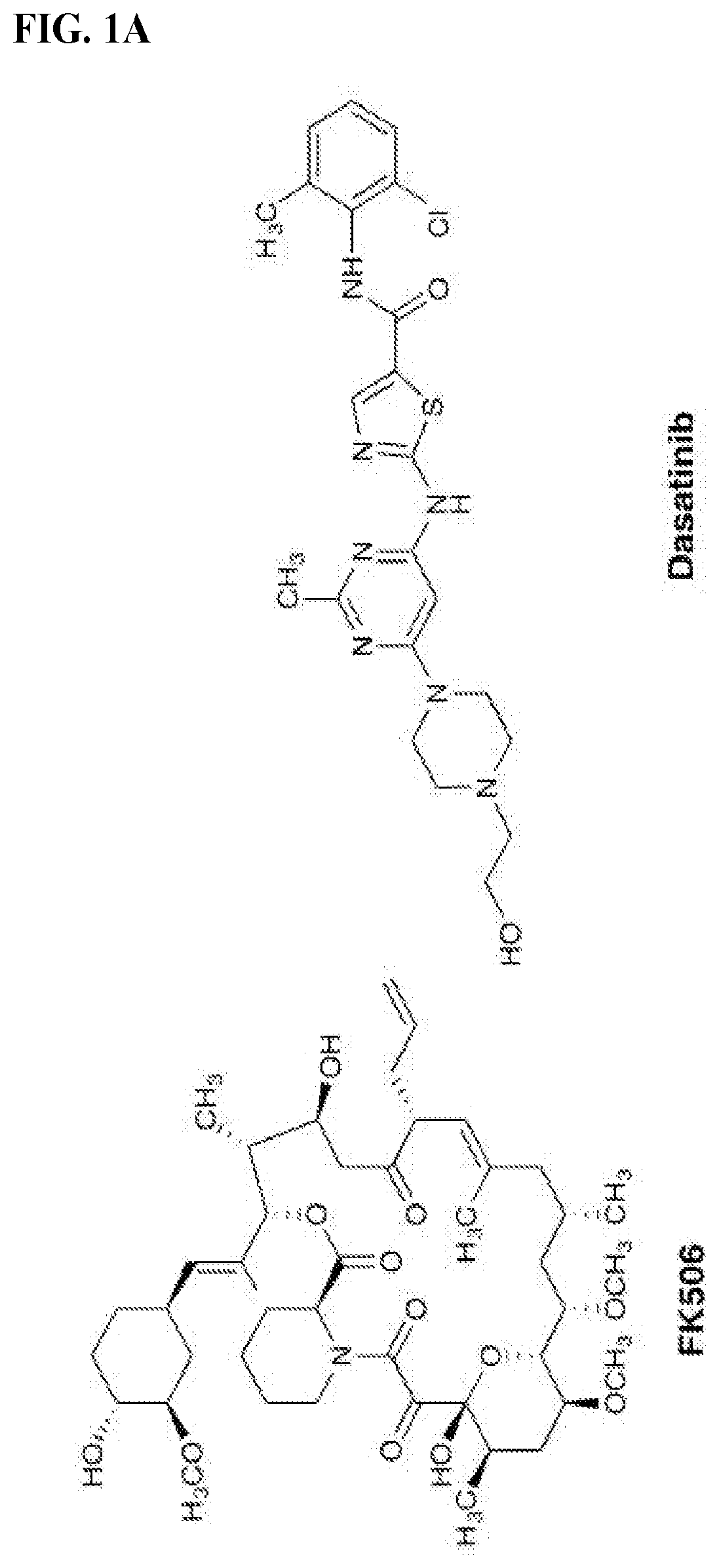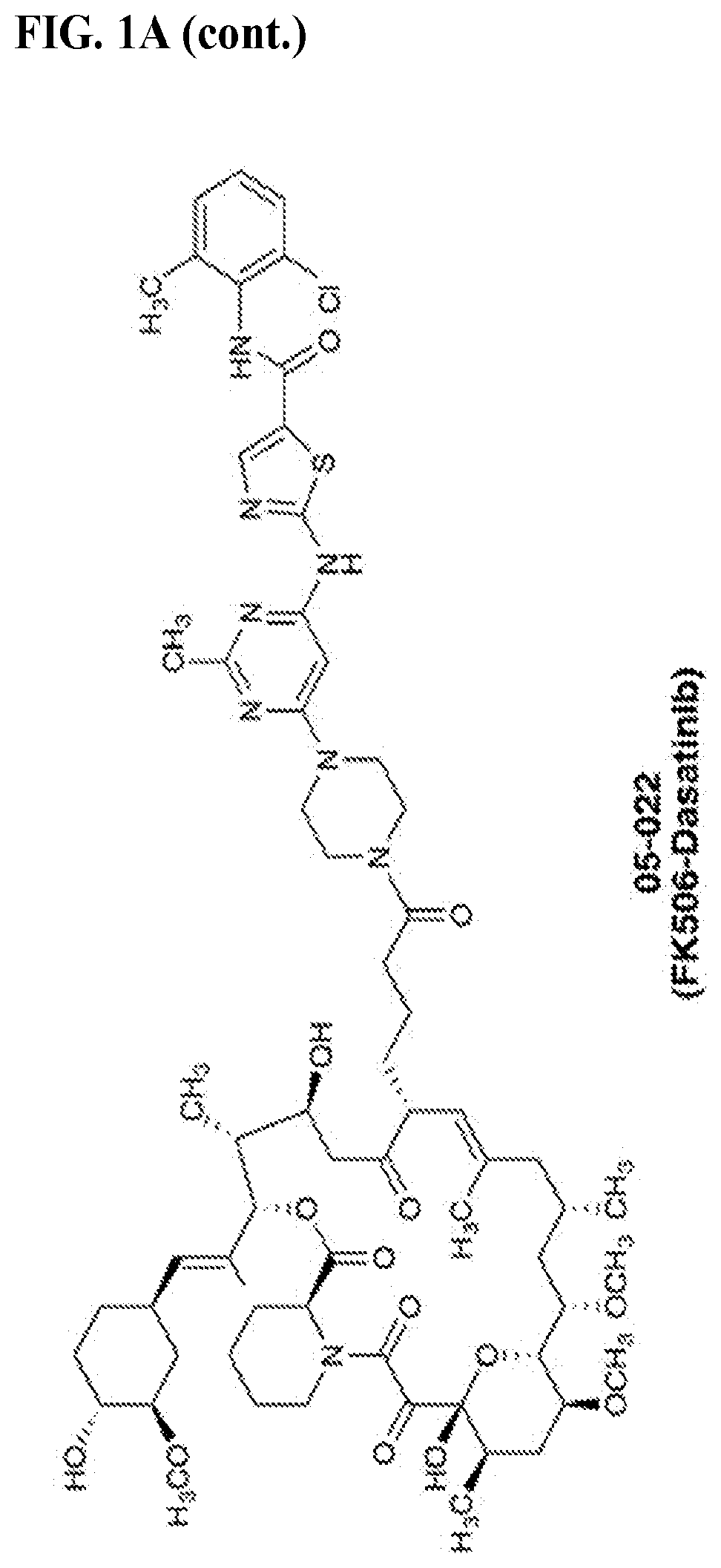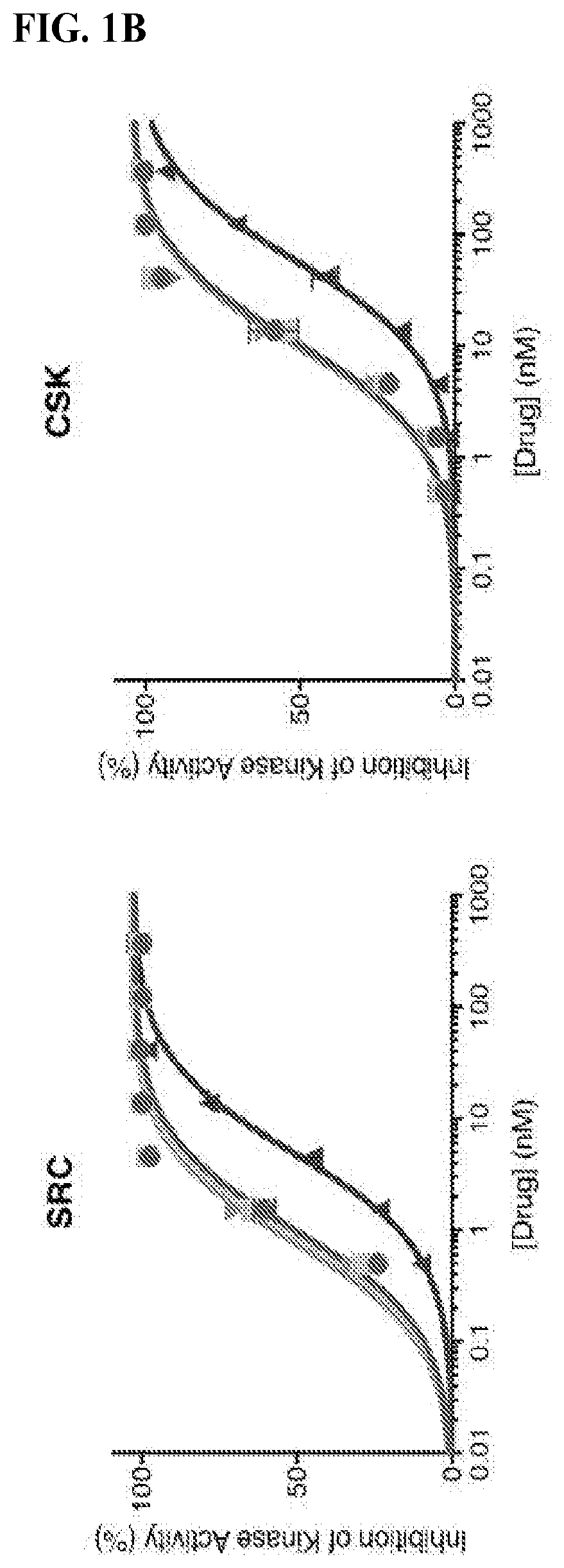Immunophilin-dependent inhibitors and uses thereof
a technology of immunomodulatory inhibitors and inhibitors, applied in the field of immunomodulatory inhibitors, can solve the problems of lack of methods for allowing reversal of the effects of kinase inhibitors or tissue-directed kinase inhibition
- Summary
- Abstract
- Description
- Claims
- Application Information
AI Technical Summary
Benefits of technology
Problems solved by technology
Method used
Image
Examples
example 1
sign
[0831]We chose dasatinib, an FDA-approved pan-Src family kinase inhibitor, for our model study as abundant literature on its pharmacological properties and structural information is available to aid our initial design and analysis. Inspection of the crystal structures of FKBP12-FK506 complex (PDB: 1FKJ) and dasatinib-Src complex (PDB: 3G5D) revealed that the allyl group at the C21 position of FK506 and the hydroxylethyl group in dasatinib on the piperazine ring are exposed to solvent and serve as suitable sites for chemical fusing Previous structure-activity relationship studies on FK506 and dasatinib also indicate that chemical alterations at these two sites have minimal impact on their affinities for their respective targets. We envisioned that modifying the C21 allyl group confers an additional advantage: substituents larger than allyl at this position will ablate FK506's ability to inhibit its natural target calcineurin, an undesirable activity in our present application. To...
example 2
ormation
[0833]The participation of FKBP12 in the inhibition of kinases by FK-dasatinib is further revealed by its ligand-dependent association with kinases. Addition of FK-Dasatinib to a mixture of recombinant Src kinase domain (33 kDa) and FKBP12 (12 kDa) induced the formation of a stable complex (˜50 kDa) that can be purified by size exclusion chromatography (FIG. 2A). The molecular weight of the complex suggests a 1:1:1 stoichiometry consistent with the anticipated binding mechanism of FK-dasatinib. Differential scanning fluorimetry suggested that formation of this complex led to stabilization of both protein components toward thermal denaturation to a greater extent than dasatinib alone (FIG. 2B). Such tripartite interactions are preserved in more complex native environments—Src co-immunoprecipitated with HA-FKBP12 in Jurkat cell lysates treated with FK-Dasatinib, but not FK506 (FIG. 2C).
example 3
g Efficacy
[0834]To evaluate the efficacy of FK-Dasatinib in cells, we studied its effect on CD3 crosslinking-triggered T cell activation. Src family kinases, notably Lck and Fyn, are key regulators of T cell receptor (TCR) signal transduction, and dasatinib is known to block T cell activation by inhibiting these kinases. We stimulated Jurkat cells with an anti-CD3 monoclonal antibody (OKT3) in the presence of dasatinib or FK-dasatinib and monitored their activation by Western blot. At 100 nM, both dasatinib and FK-dasatinib dampened the of total phospho-tyrosine level and suppressed the phosphorylation of several proteins involved in TCR signaling including Src-family kinases, PLCgamma1, ZAP70 and LAT (FIG. 3A). Interestingly, three homodimers of dasatinib containing linkers of various length (FIG. 6A) had no measurable inhibition of phosphotyrosine signal. FK-dasatinib was effective at concentrations as low as 10 nM (EC50=3.4 nM, FIG. 3C). To profile the target scope of FK-dasatini...
PUM
| Property | Measurement | Unit |
|---|---|---|
| β aggregation | aaaaa | aaaaa |
| enzyme activity | aaaaa | aaaaa |
Abstract
Description
Claims
Application Information
 Login to View More
Login to View More - R&D
- Intellectual Property
- Life Sciences
- Materials
- Tech Scout
- Unparalleled Data Quality
- Higher Quality Content
- 60% Fewer Hallucinations
Browse by: Latest US Patents, China's latest patents, Technical Efficacy Thesaurus, Application Domain, Technology Topic, Popular Technical Reports.
© 2025 PatSnap. All rights reserved.Legal|Privacy policy|Modern Slavery Act Transparency Statement|Sitemap|About US| Contact US: help@patsnap.com



